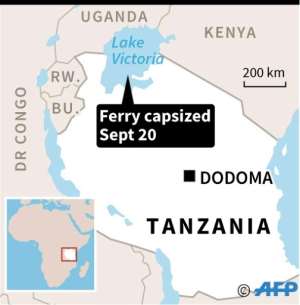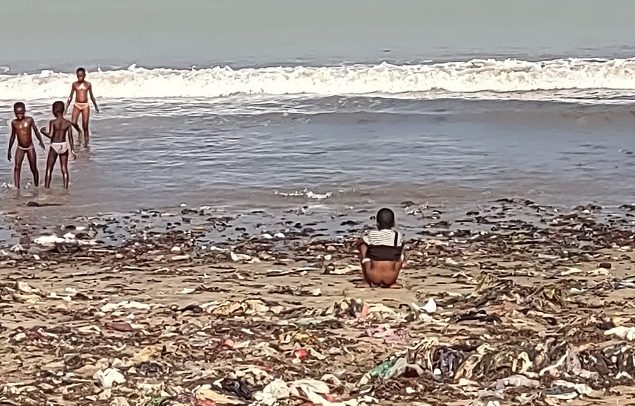
Tanzanian rescue workers scrambled Friday to find scores of people feared drowned after a ferry capsized in Lake Victoria, Africa's largest lake, killing at least 79 people.
The MV Nyerere may have been carrying as many as 200 passengers -- double the ferry's capacity -- when it capsized close to the pier on Ukara Island on Thursday afternoon, according to reports on state media.
"At the moment the death toll is 79," said Mwanza governor John Mongella, quoted on state television on Friday.
The number of those found alive after Thursday's disaster remained at 37, with no more survivors found since rescue operations resumed with police and army divers Friday morning.
Rescue operations were suspended overnight and hopes are fading that more survivors might still be found, more than 18 hours since the vessel sank.
The state broadcaster cited witnesses reporting that over 200 people had boarded the ferry at Bugorora Island where it was market day when locals said the vessel was commonly packed with people and goods.
"I have not heard from either my father or my younger brother who were on the ferry. They had gone to the market in Bugorora to buy a school uniform and other supplies for the new school term," said Domina Maua who was among those seeking information about loved ones.
Davita Ngenda, an elderly woman in Ukara, had already received bad news. "My son is among the bodies recovered," she said, weeping. "He had gone with his wife but she has not been found yet. My God, what did I do to deserve this?"
Sebastian John, a teacher, said such tragedies had become part of life for those living on the lake.
"Since my birth, people have gone to their deaths on this lake, but what are we to do? We did not choose to be born here, we have nowhere to go," he said.
It remains unclear how many people are still missing.
Tanzania's Electrical, Mechanical and Services Agency, which is responsible for ferry services, said it was unknown how many passengers were aboard the MV Nyerere.
The ageing ferry was also carrying cargo, including sacks of maize, bananas and cement, when it overturned and then sank around 50 metres (55 yards) from Ukara dock.
The cause of the accident was not immediately clear, but overloading is frequently to blame for such incidents.
Overloading and 'negligence'
President John Magufuli was "deeply saddened" by the disaster and called on Tanzanians to "stay calm during these difficult times," according to spokesman Gerson Msigwa.
The country's opposition, however, accused the government of "negligence".
"We have often raised concerns about the poor condition of this ferry, but the government turned a deaf ear. We have repeatedly denounced this negligence," said John Mnyika, deputy secretary general of Chadema, the main opposition party.
Mnyika said overloading was "another failure of the authorities" and criticised "inadequate relief efforts as well as delays" in the rescue operation.
With a surface area of 70,000 square kilometres (27,000 square miles), oval-shaped Lake Victoria is roughly the size of Ireland and is shared by Tanzania, Uganda and Kenya.
Capsizes are not uncommon in the massive lake, and the number of fatalities is often high due to a shortage of life jackets and the fact that many people in the region cannot swim.
 Map of Tanzania locating Lake Victoria, where a ferry capsized Thursday. By Gal ROMA (AFP)
Map of Tanzania locating Lake Victoria, where a ferry capsized Thursday. By Gal ROMA (AFP) The deadliest such accident in recent decades was in May 1996, when around 800 people died after their ferry sank on the way to Mwanza in Tanzania.
Waters in the lake can be rough and boats are frequently poorly maintained, while ferry operators often fail to record the number of passengers on board.
Around 20 people were killed in December 2016 when their boat overturned in Lake Victoria as it was carrying passengers to Uganda's mainland for Christmas holidays.
And in March 2012, only two survivors were found after a boat believed to be carrying around 60 people capsized on the lake in Uganda.
Read Full Story









Facebook
Twitter
Pinterest
Instagram
Google+
YouTube
LinkedIn
RSS